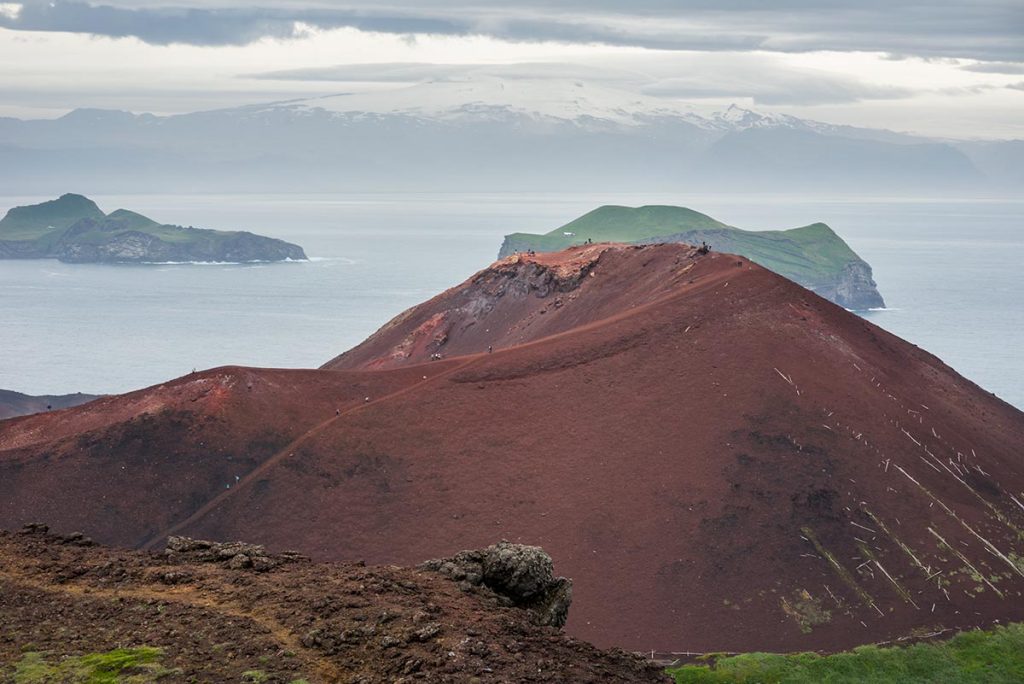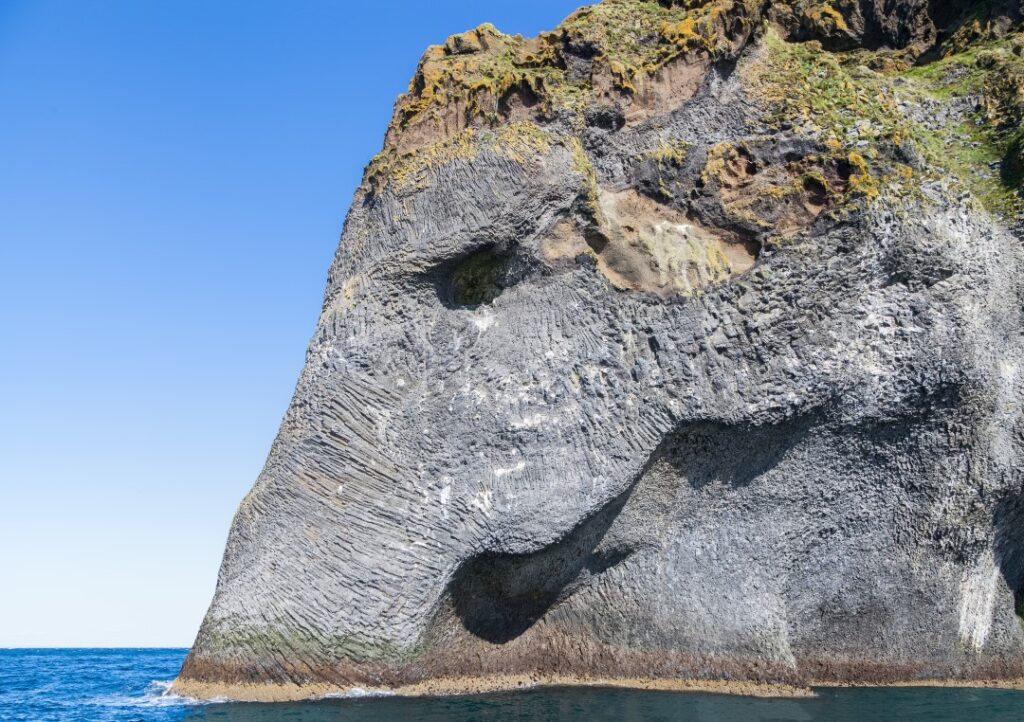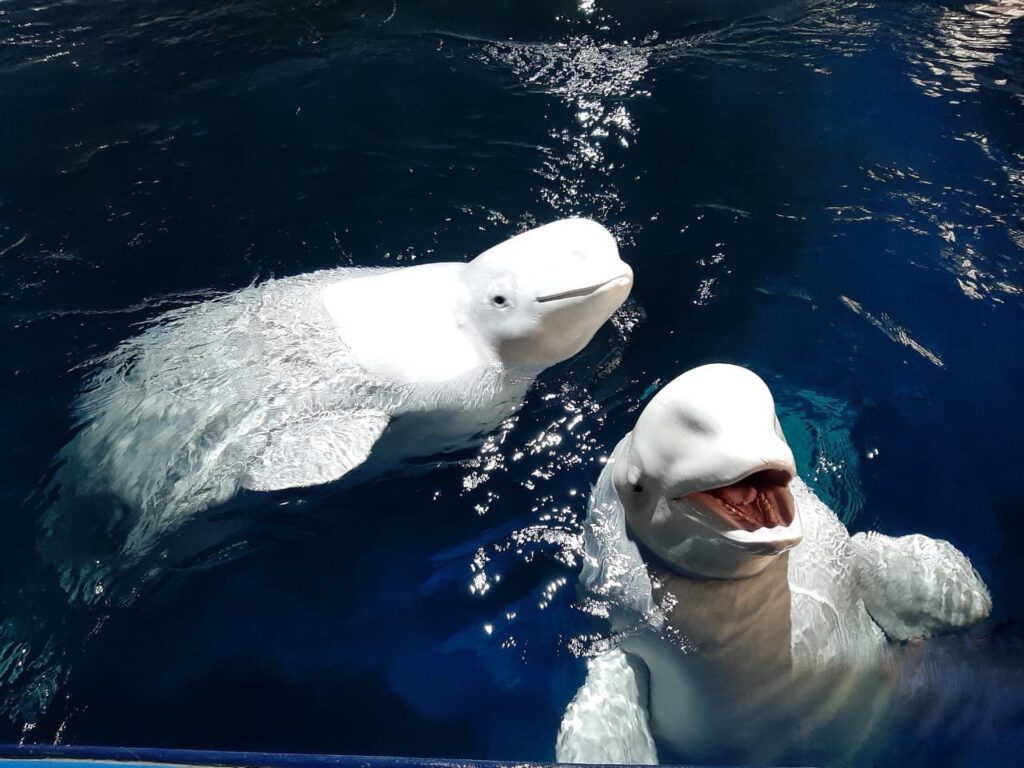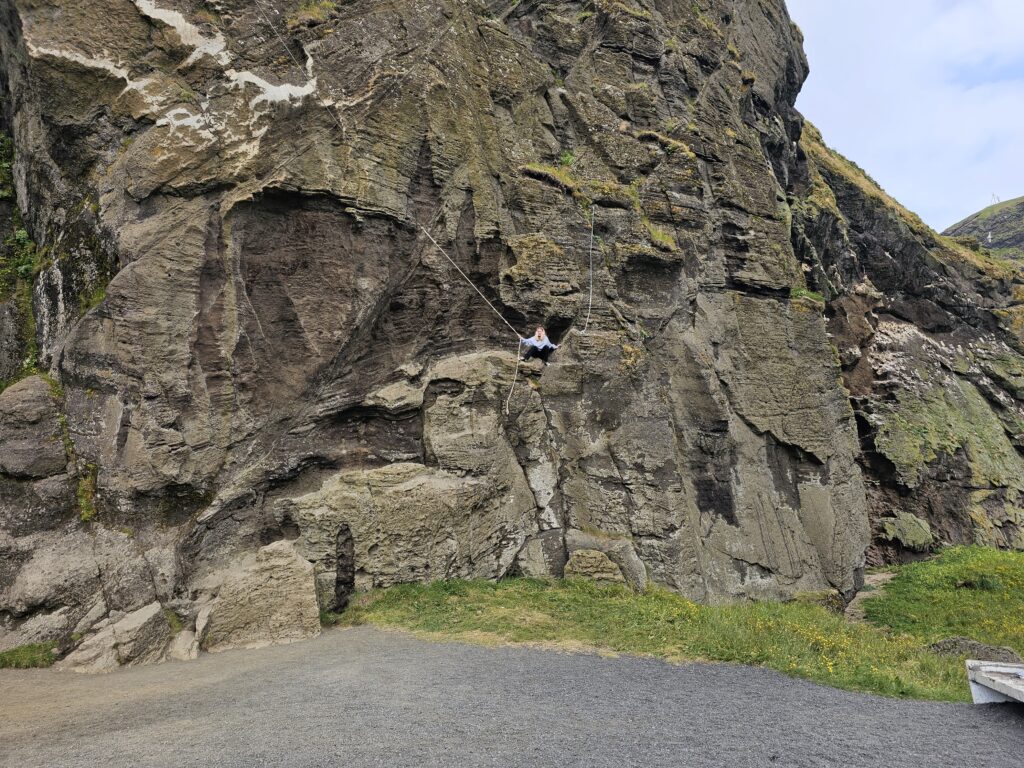What to see in the Westman Islands
The Westman Islands can be overlooked by travellers as they are sometimes perceived as being out of the way. But that’s not the case: the ferry crossing to Heimaey takes well under an hour and once you’re there, the main sights are conveniently located fairly close to each other. There’s plenty to see, whether you’re there for the day or plan to stay for a bit longer. Here’s our picks for what to see in the Westman Islands, some of which you’ll enjoy if you book our Volcano ATV tour.
Eldfell
In 1973, Heimaey was the setting for a dramatic and unexpected volcanic eruption. One January night, with very little warning, magma started flowing. Luckily, the island’s fishing fleet had been unable to head out that evening as the stormy weather had made it too dangerous. Instead of loading fish, they ferried local residents to safety on the mainland. Incredibly, the evacuation was a success, and although many people lost their homes and possessions, they escaped with their lives. The volcano carried on erupting for months, and the result was a new cone which was later called Eldfell. Today, its red flanks are a reminder of the hazard of living in a volcanic archipelago. The hike across the lava field and up to the summit is manageable for anyone who’s moderately fit, making this one of the must-sees in Heimaey today. You can also visit this landmark on our ATV tour and save yourself the legwork.

The house at Eldheimar
Because the 1973 eruption caused so much destruction, it’s only natural that there was a need to memorialise what had been lost and mark such a key event in the history of the Westman Islands. Ash and lava engulfed around 400 houses. Since then, one home has been carefully excavated and set within the Eldheimar museum as a powerful reminder of how nature can reclaim what’s hers whenever she wishes.
Elephant Rock
The rocky shore of the Westman Islands is a geologist’s dream and many of the rock formations are a remarkable sight. Pareidolia, where we imagine we see a visible creature or feature in an inanimate object, is a common thing around the world and it happens right here in Heimaey. Many people fancy that they can see the shape of an elephant head whose trunk is partially submerged in the water. This basalt landform was created during the eruption of Eldfell. Thanks to its grey colour and the crumpled appearance the resemblance is striking, even to sceptics.

The puffins at Stórhöfði
For summer visitors to the Westman Islands, the massive puffin colony that installs itself at Stórhöfði each year is another essential stop. Atlantic puffins are found in many parts of Iceland, arriving in spring to nest and breed. They raise their young in grassy burrows in the coastal cliffs, flying back and forth with food. Though it’s often exceptionally windy at Stórhöfði, there’s a conveniently located bird hide in the southern part of Heimaey and if you wait inside, you’ll be well positioned to see the action at close quarters. These cute, comical seabirds with their monochrome plumage, colourful beaks and orange feet are an enchanting sight. It’s well worth making sure you time your visit for before they depart in August as you’ll be disappointed if you don’t get to see them.
Klettshellir sea cave
One of Heimaey’s most impressive things to see is Klettshellir sea cave. Erosion by the waves has hollowed out a sizeable cavern that’s large enough for boats to be able to get inside. But that’s not all: the magnificent interior is known for its formidable acoustics. At the very least, take a trip out on the water to venture inside; if you happen to be in town when there’s a concert planned, you really have hit the jackpot. For instance, it was one of the unusual venues chosen by soprano singer Anna Jónsdóttir for her summer tour in 2015.
Little Grey and Little White
The Beluga Whale Sanctuary is home to two very special island residents: a pair of beluga whales called Little Grey and Little White. This rescue centre is located very close to the harbour so there’s no excuse not to pay them a visit. The cetaceans, which came from a water park in Shanghai and are in the process of being rehabilitated, are thought to have been born in 2007. The hope is that by using a halfway house – a protected area in Klettsvik Bay – they’ll eventually be able to return to the ocean instead of seeing out their days in captivity. In the meantime, while they are being looked after, you can see them at the sanctuary and learn about their care. For instance, each weighs more than 1100kg and they’re voracious feeders – they each get through around 25kg of herring and capelin a day.

The stave church at Skansinn
The opportunity to find out more about Icelandic history and culture is a big reason why many people come to the country. In this part of Heimaey, these two come together. Skansinn was a 15th century fort built to defend the harbour on Heimaey from those keen to overturn local trade restrictions. There’s a replica of a Norwegian church here which stands close to the waterfront. Painted black, it is highly photogenic on the outside. But you can also step inside and take a look at its pale wood interior. The church is built in the same style as the structures that were built during the Viking era. In fact, this particular place of worship was a gift from the Norwegian government and consecrated in the year 2000 to commemorate a thousand years of Christianity in Iceland.
Urðaviti
Harsh weather and strong waves present a considerable challenge to Iceland’s lighthouses and this one in the Westman Islands is no exception. The original lighthouse stood on the island’s east coast. It was engulfed by lava during the 1973 eruption. Hastily replaced, the current one stands surrounded by a barren volcanic landscape. The sight of this fragile-looking white lighthouse silhouetted against the red lava is extraordinary. But given time, lava is no match for powerful waves and it’s likely that at some point in the not-so-distant future this structure will succumb once more.
Someone practising their cliff skills at Sprangan
Don’t try this one on your own! The sport of spranga has been practised by Westman Islanders for centuries. Some people liken it to abseiling down a cliff, but that is far more controlled than this wild pastime where the danger of crashing into the rock face is scarily real. Originally, spranga was employed as a method of collecting the eggs of seabirds from the cliffs, a source of food. But as tastes and our understanding of conservation have evolved, it has been preserved as a quaint tradition rather than for its earlier function. But it’s harder than it looks, so attempt it at your own risk and if you still want to go ahead, make sure there’s a skilled local with you to show you the ropes (literally!)
